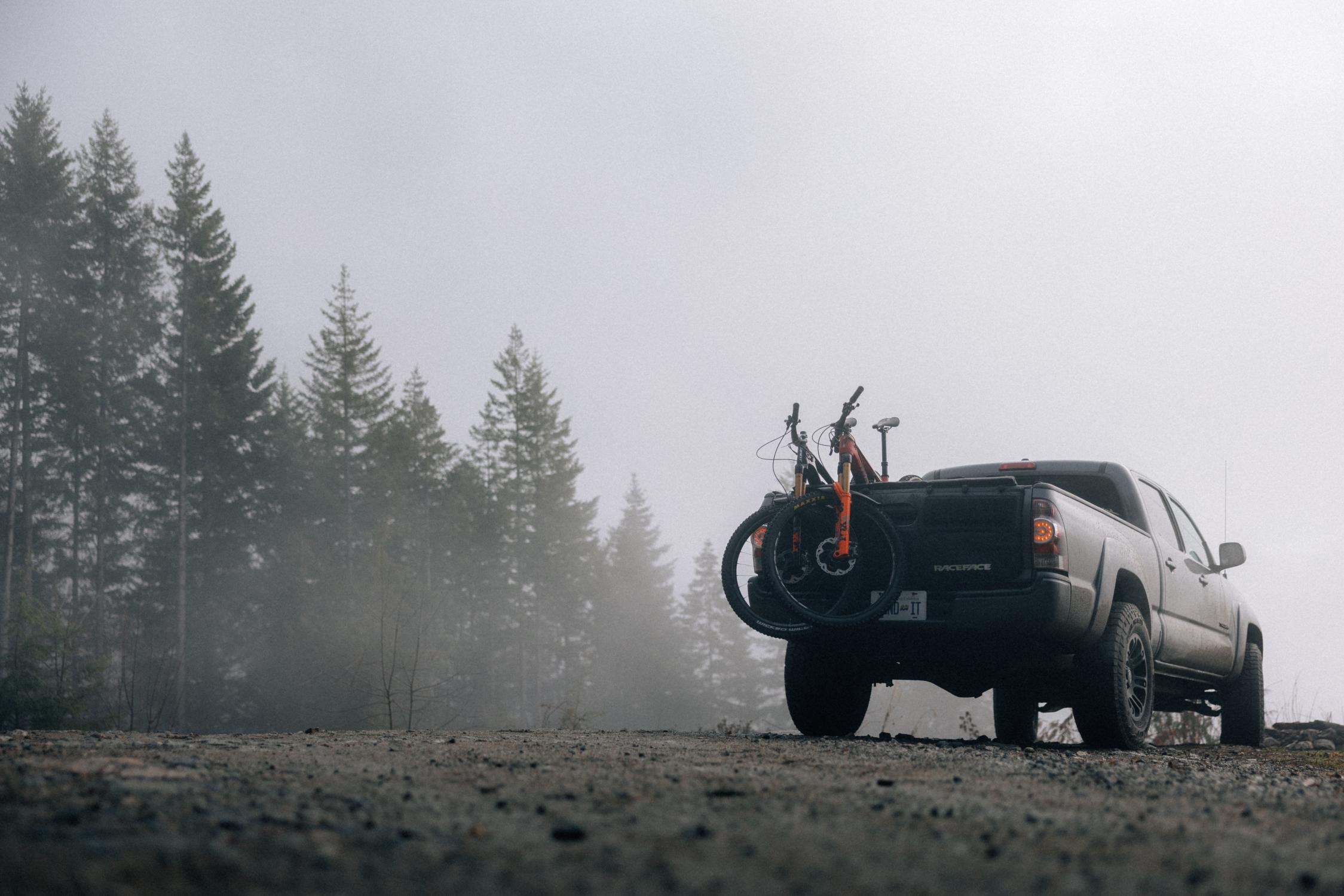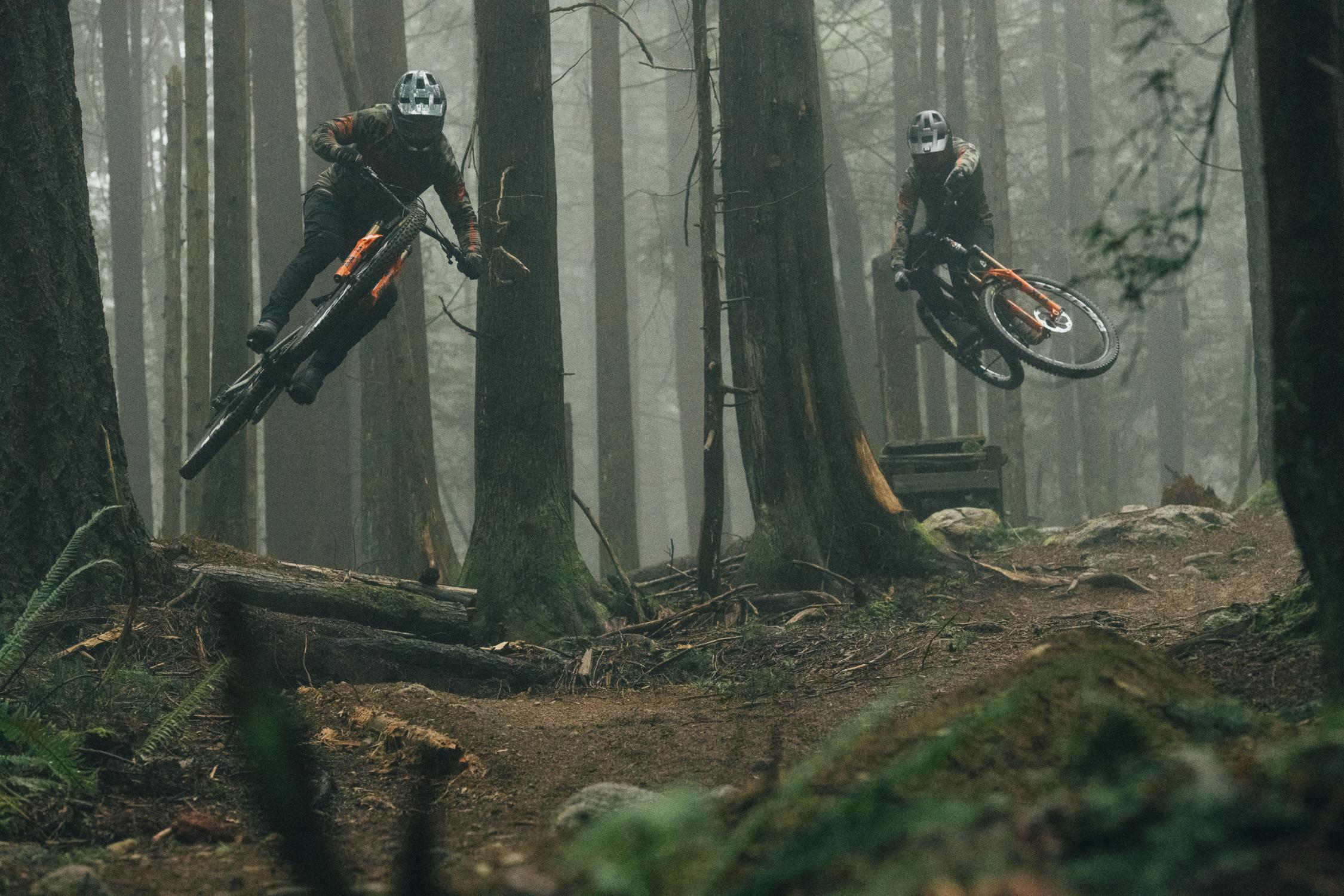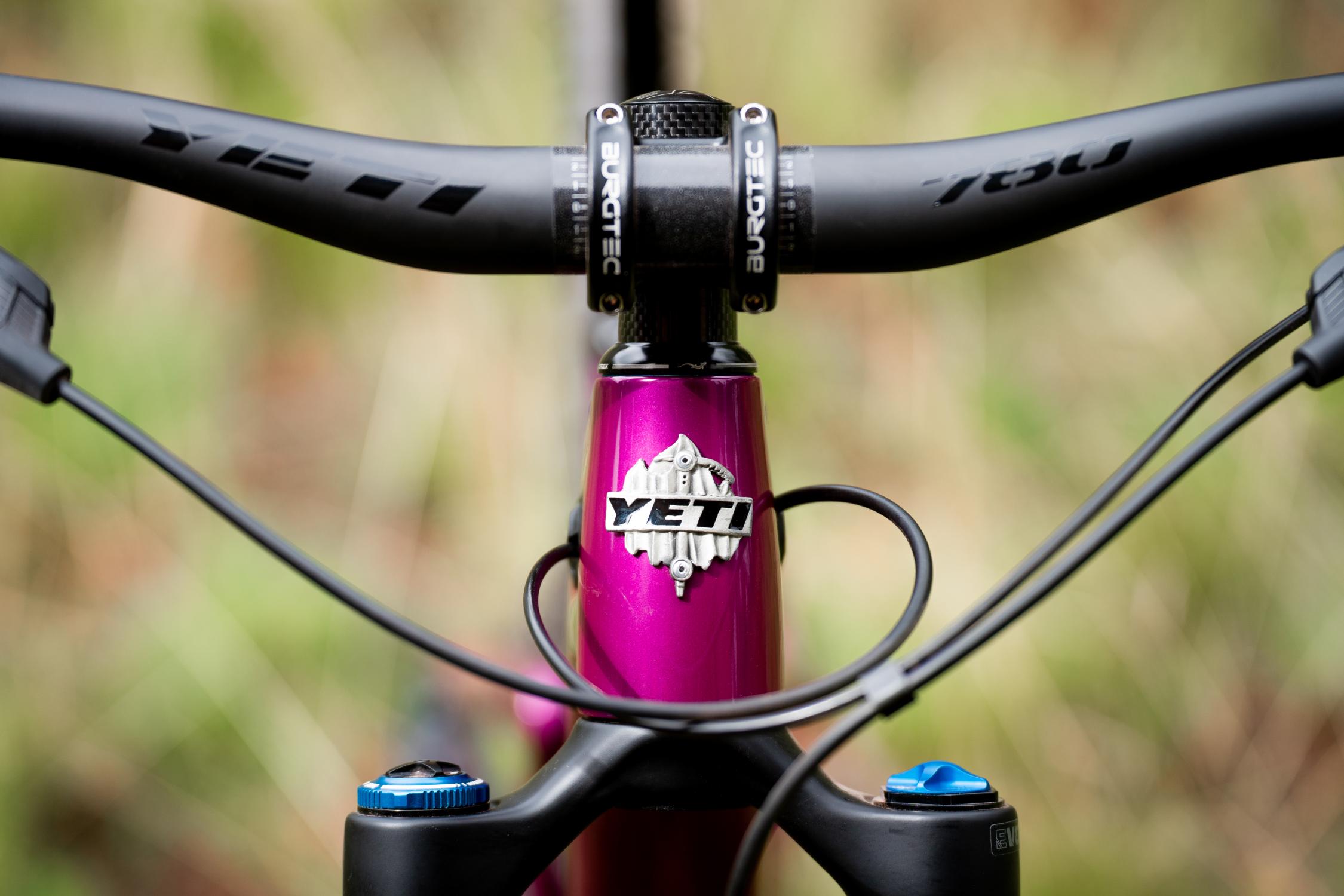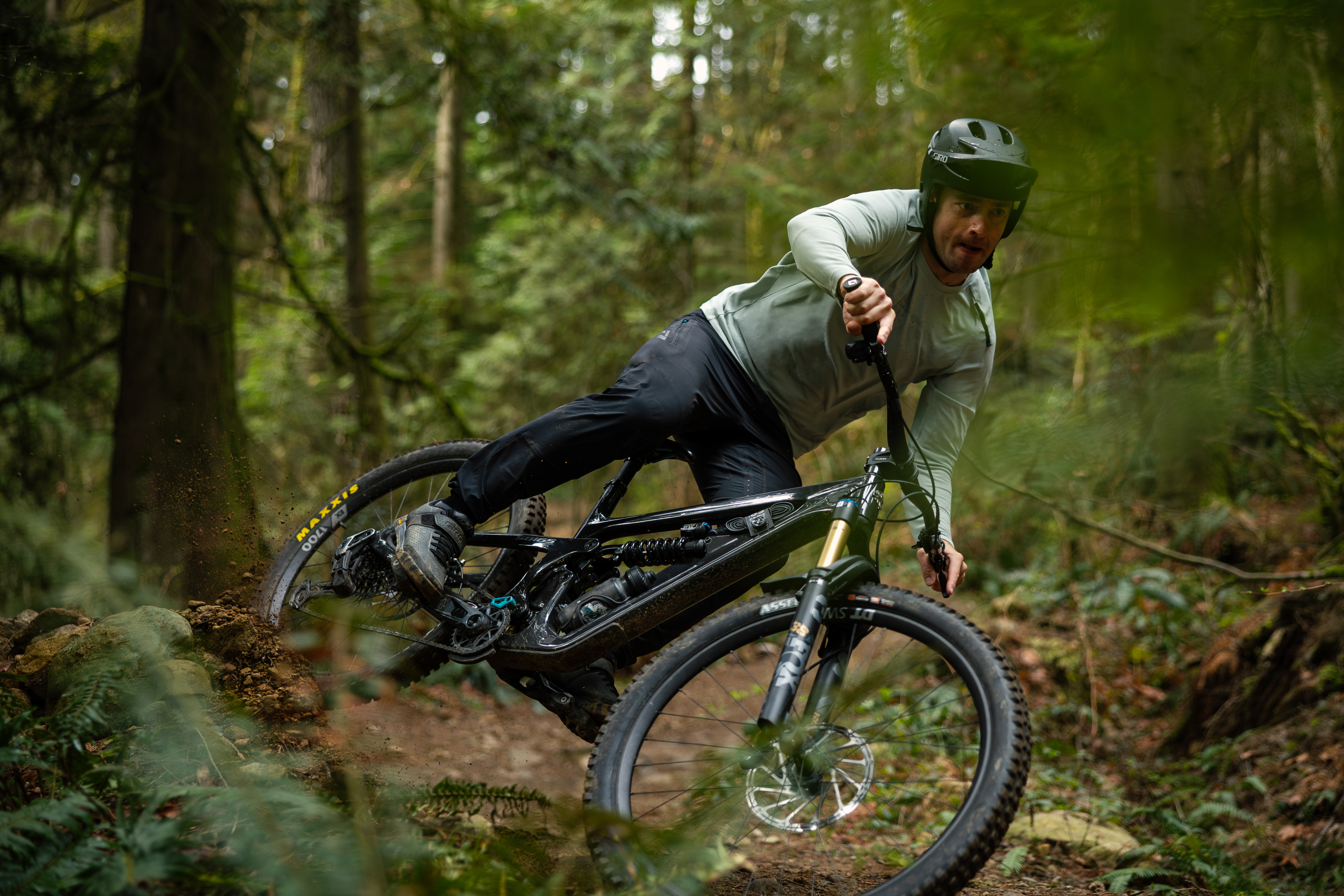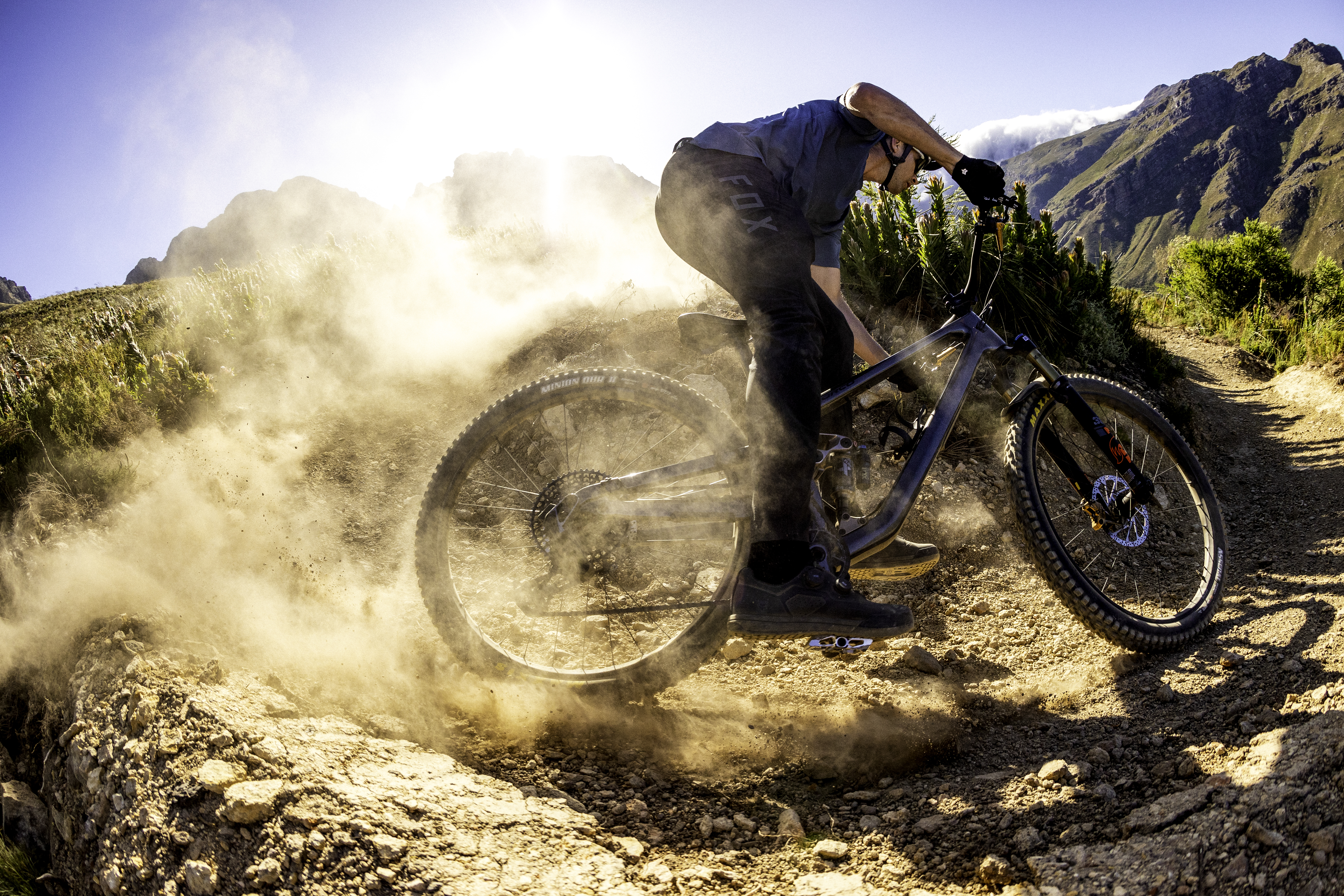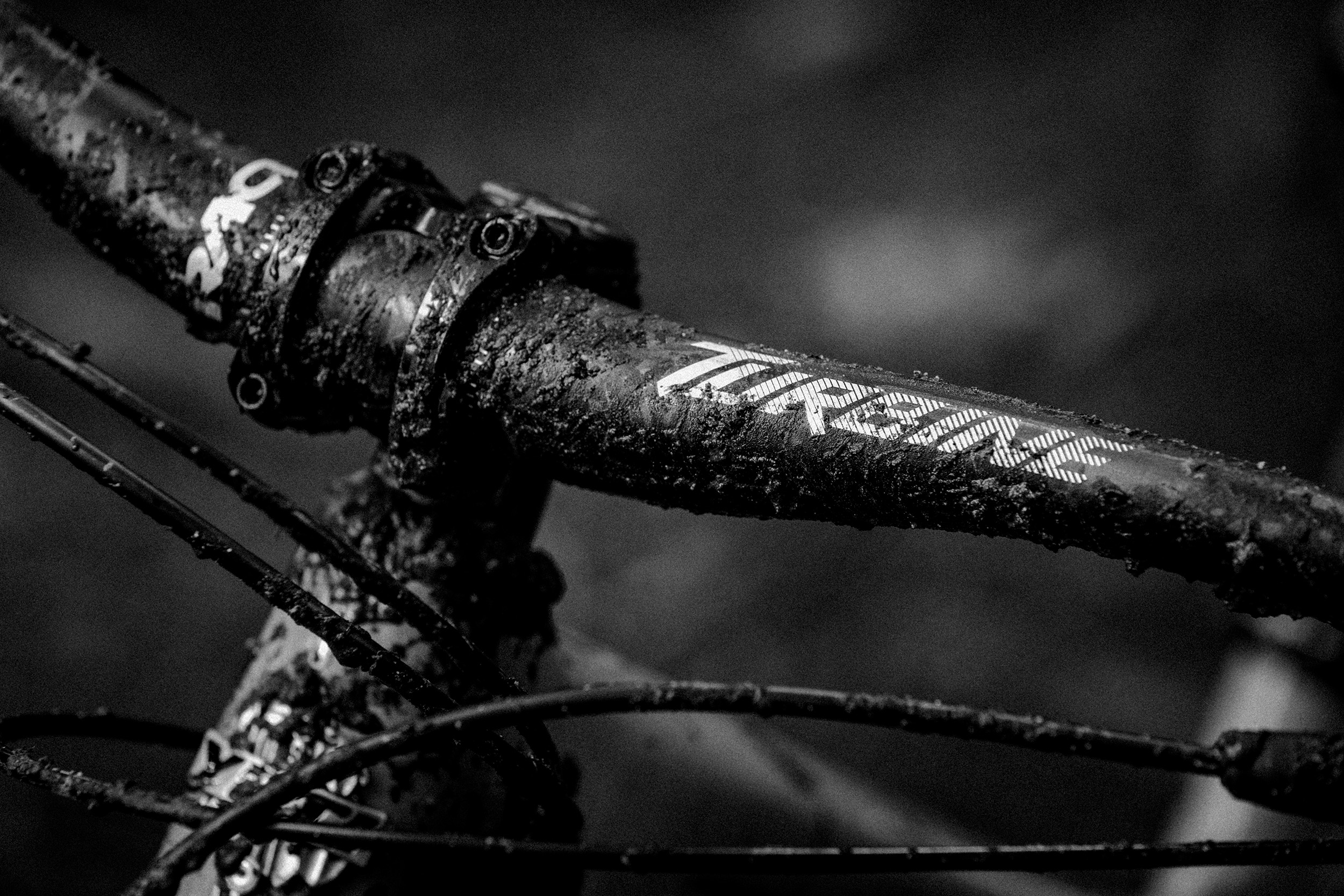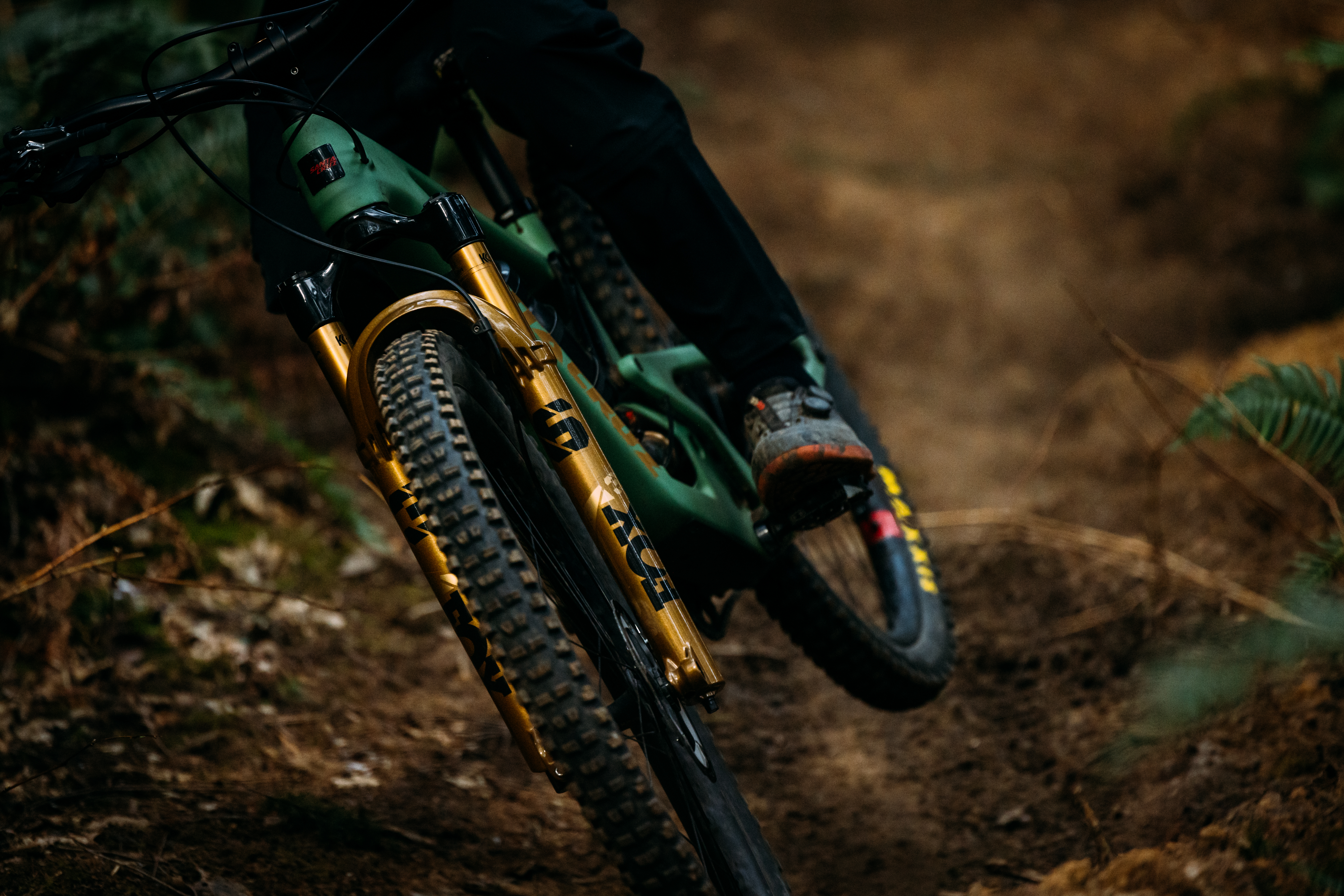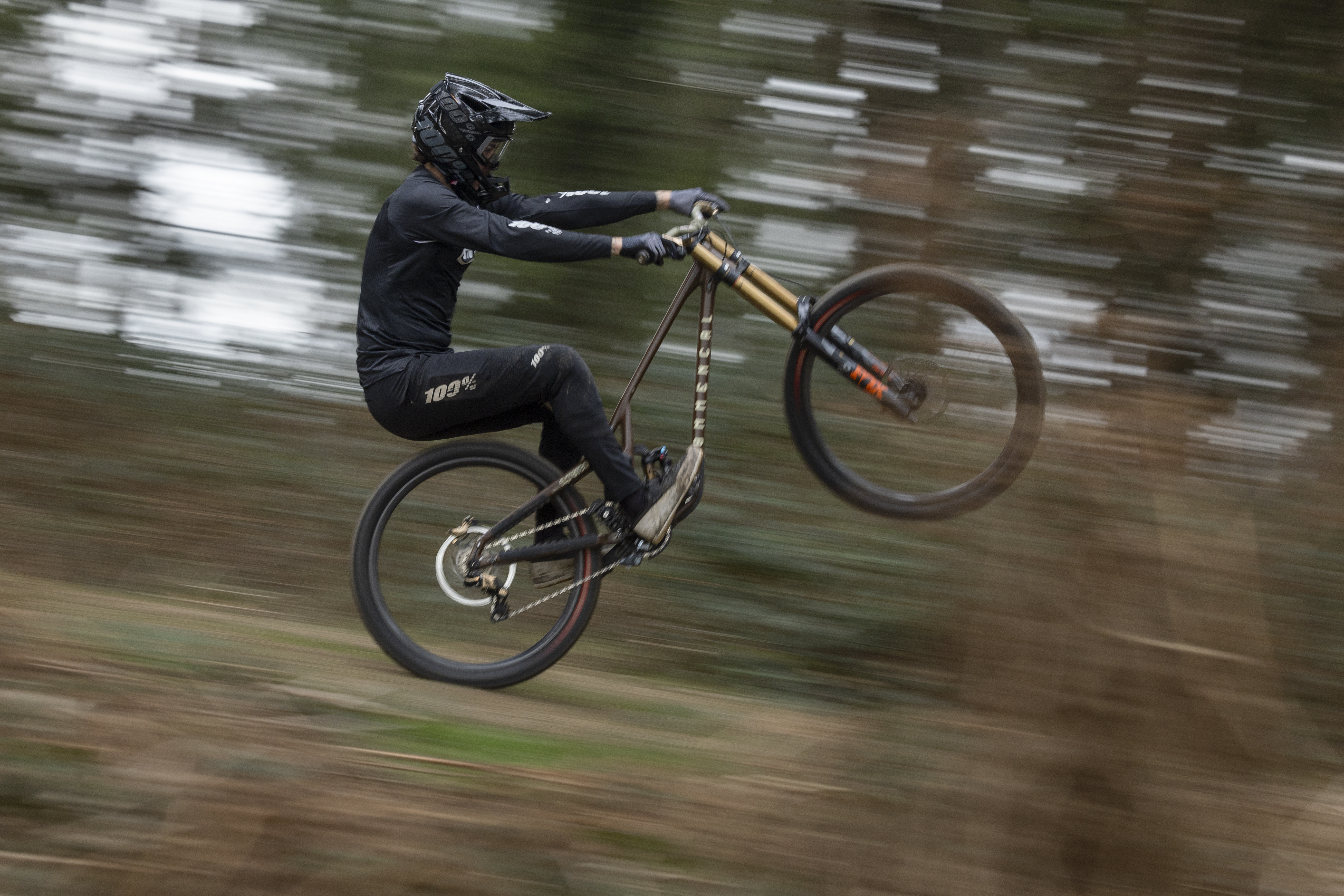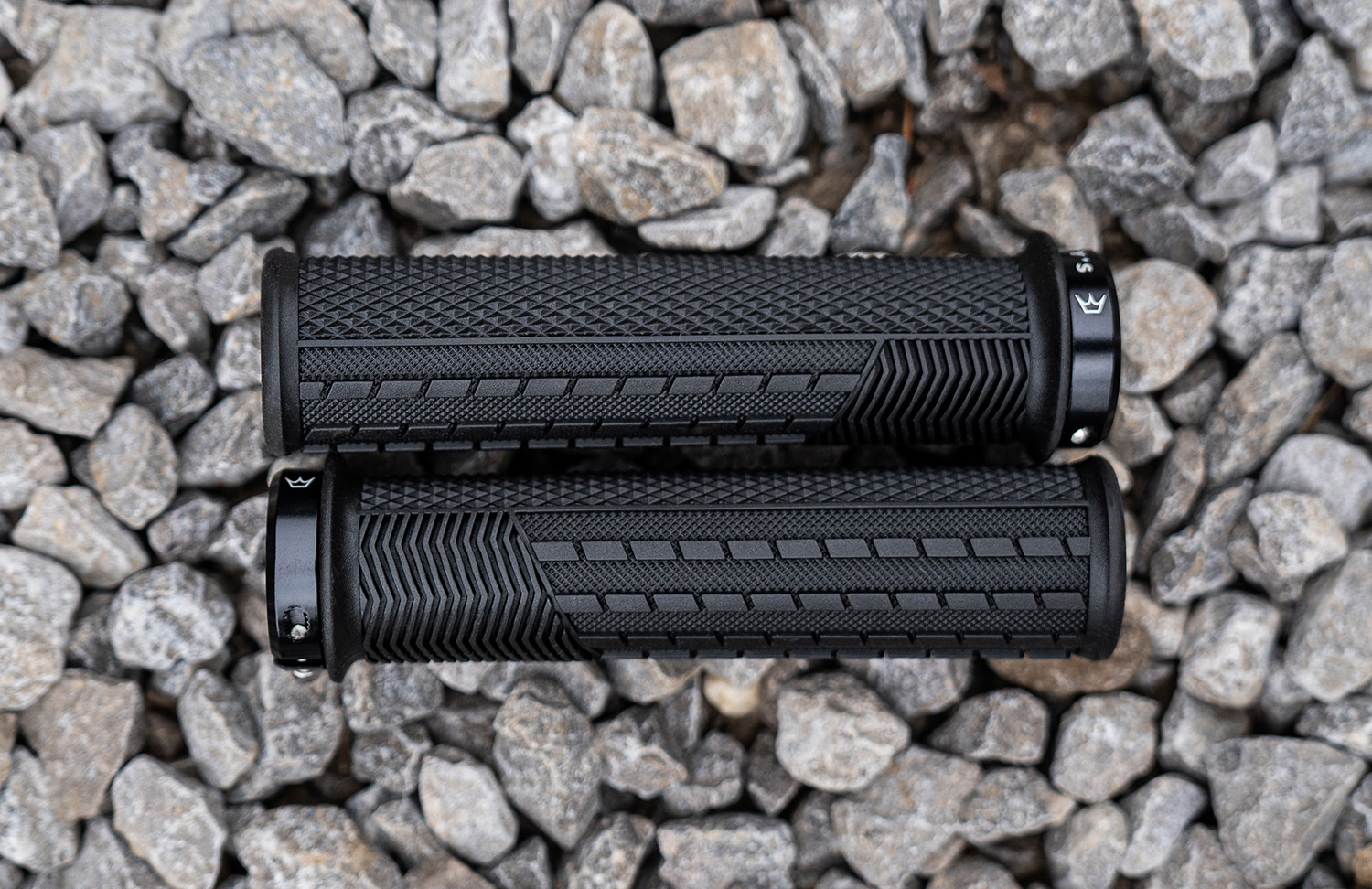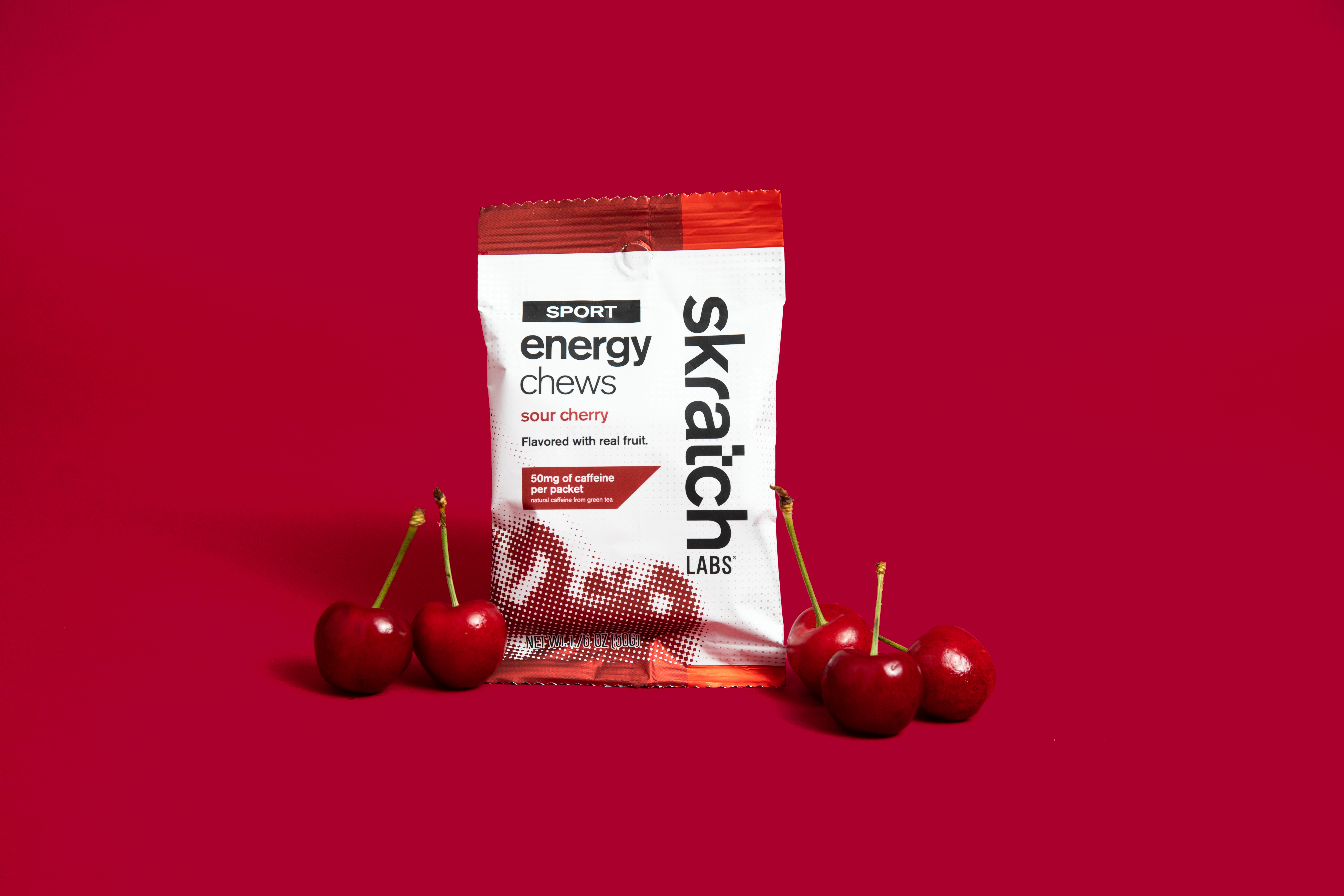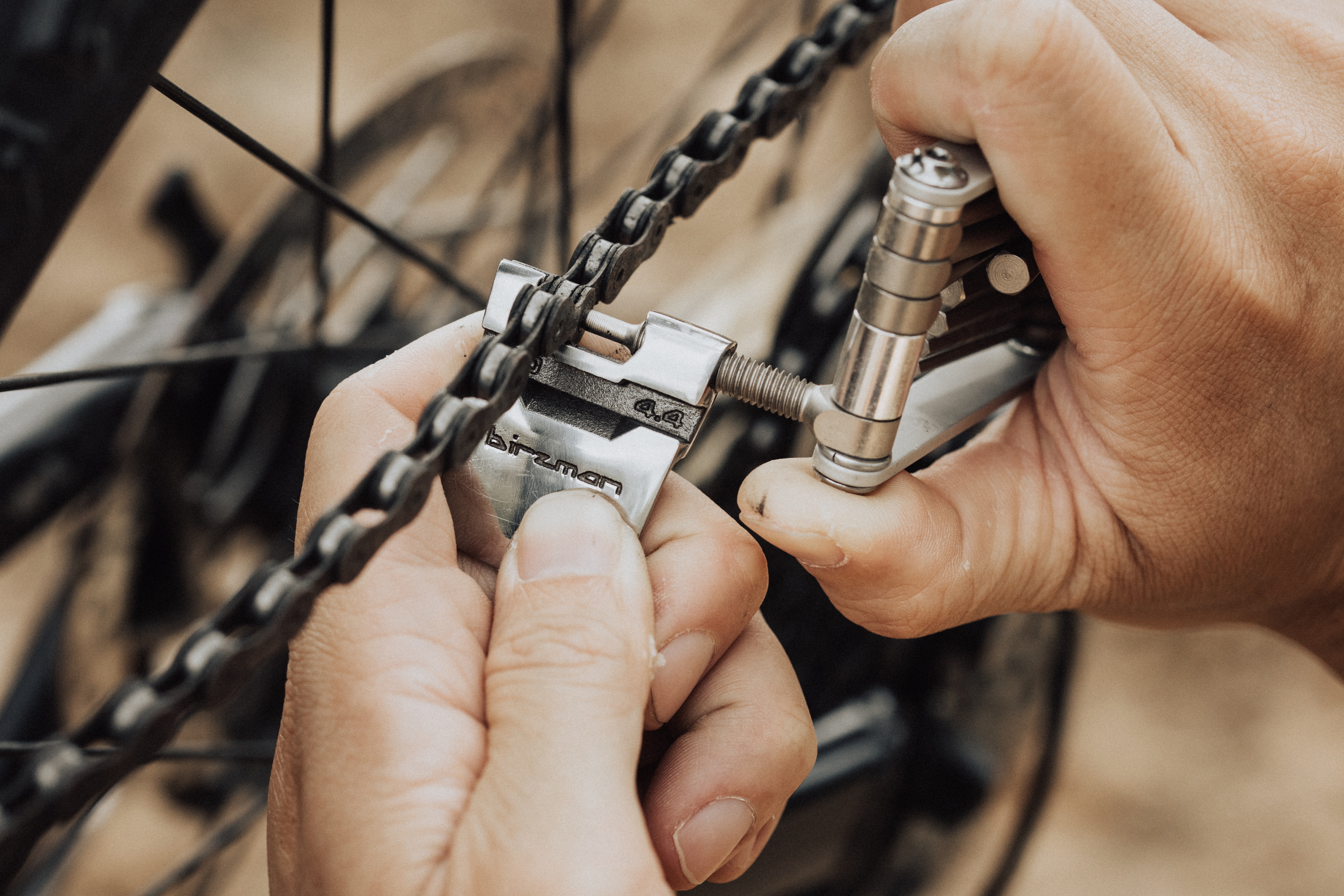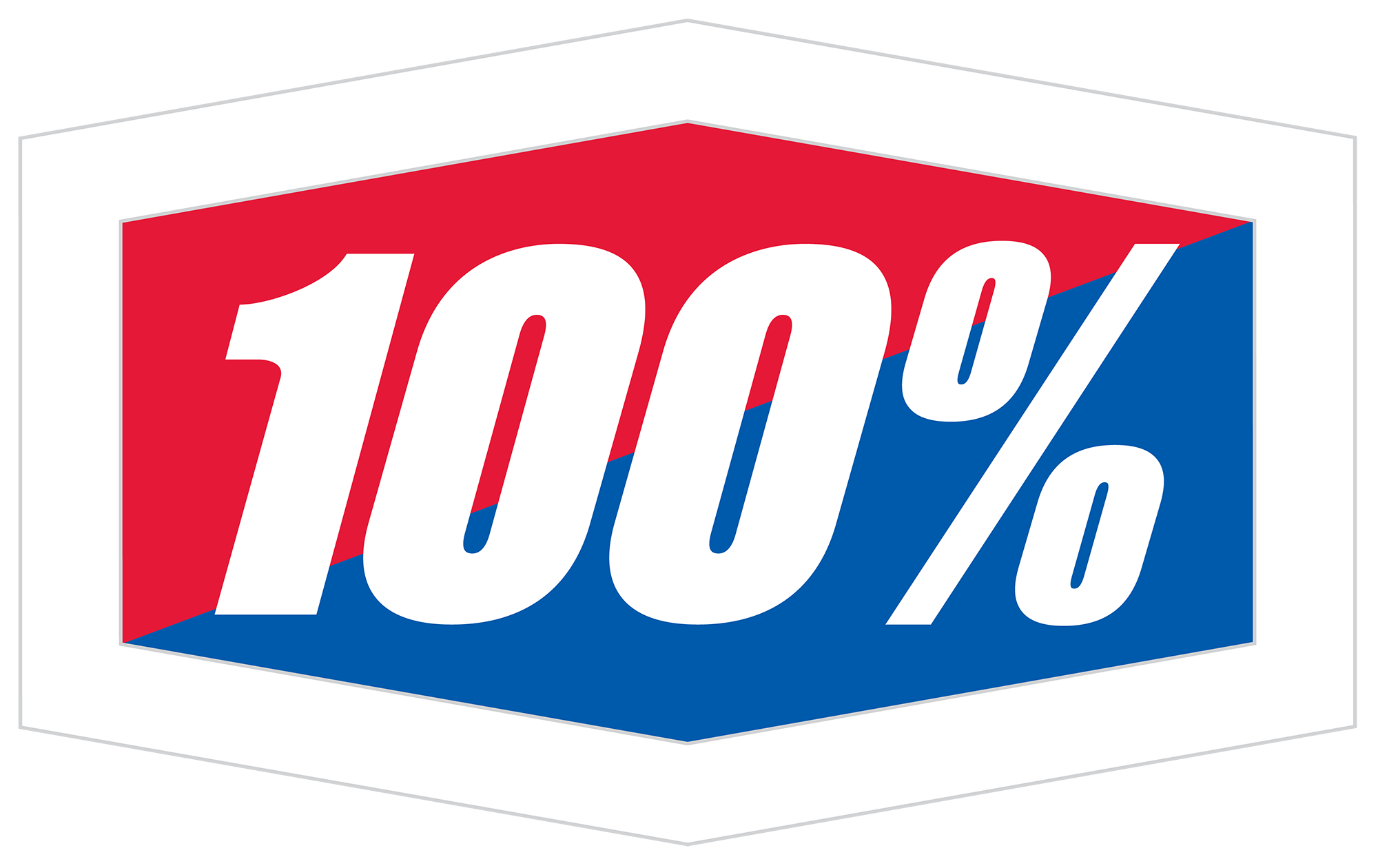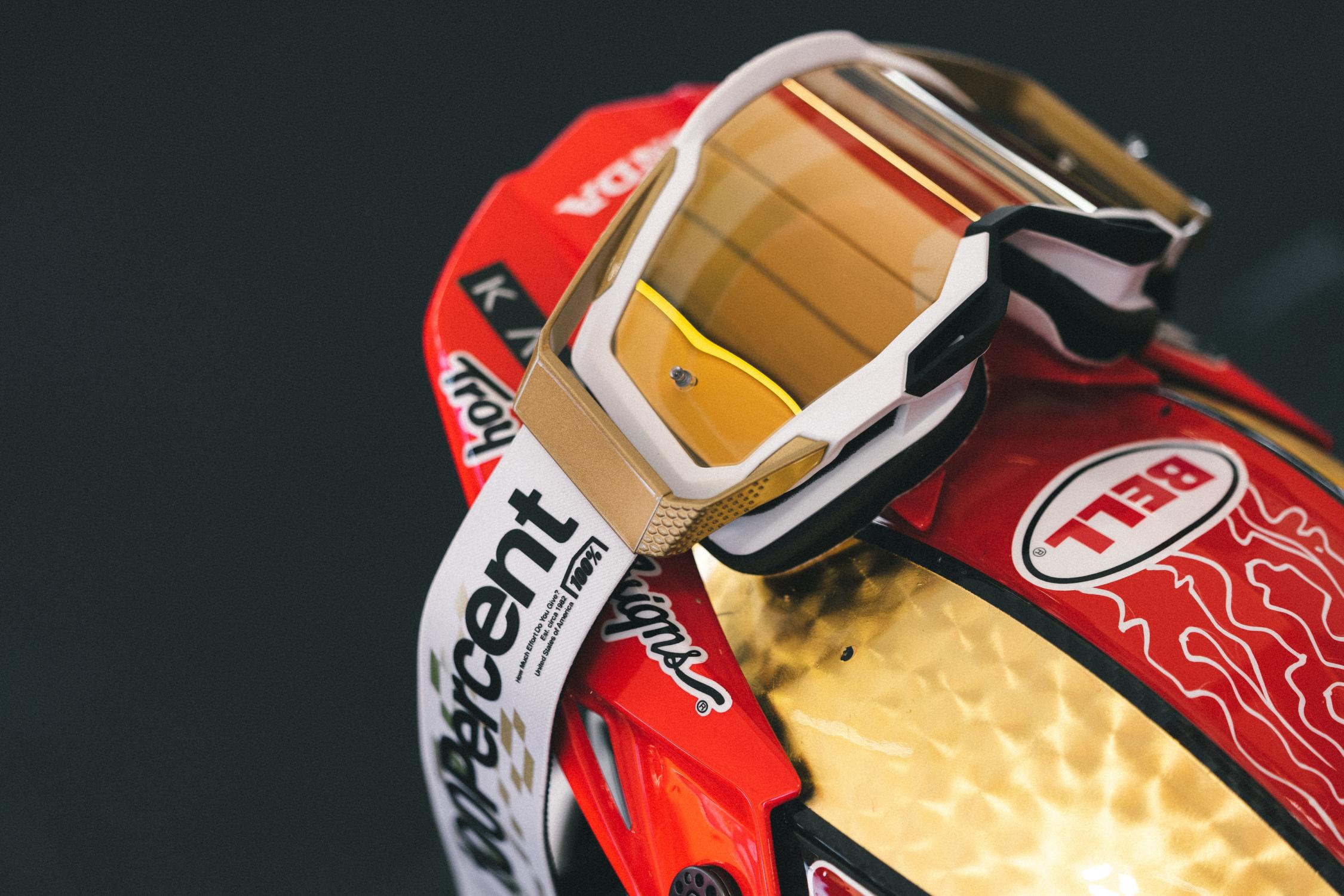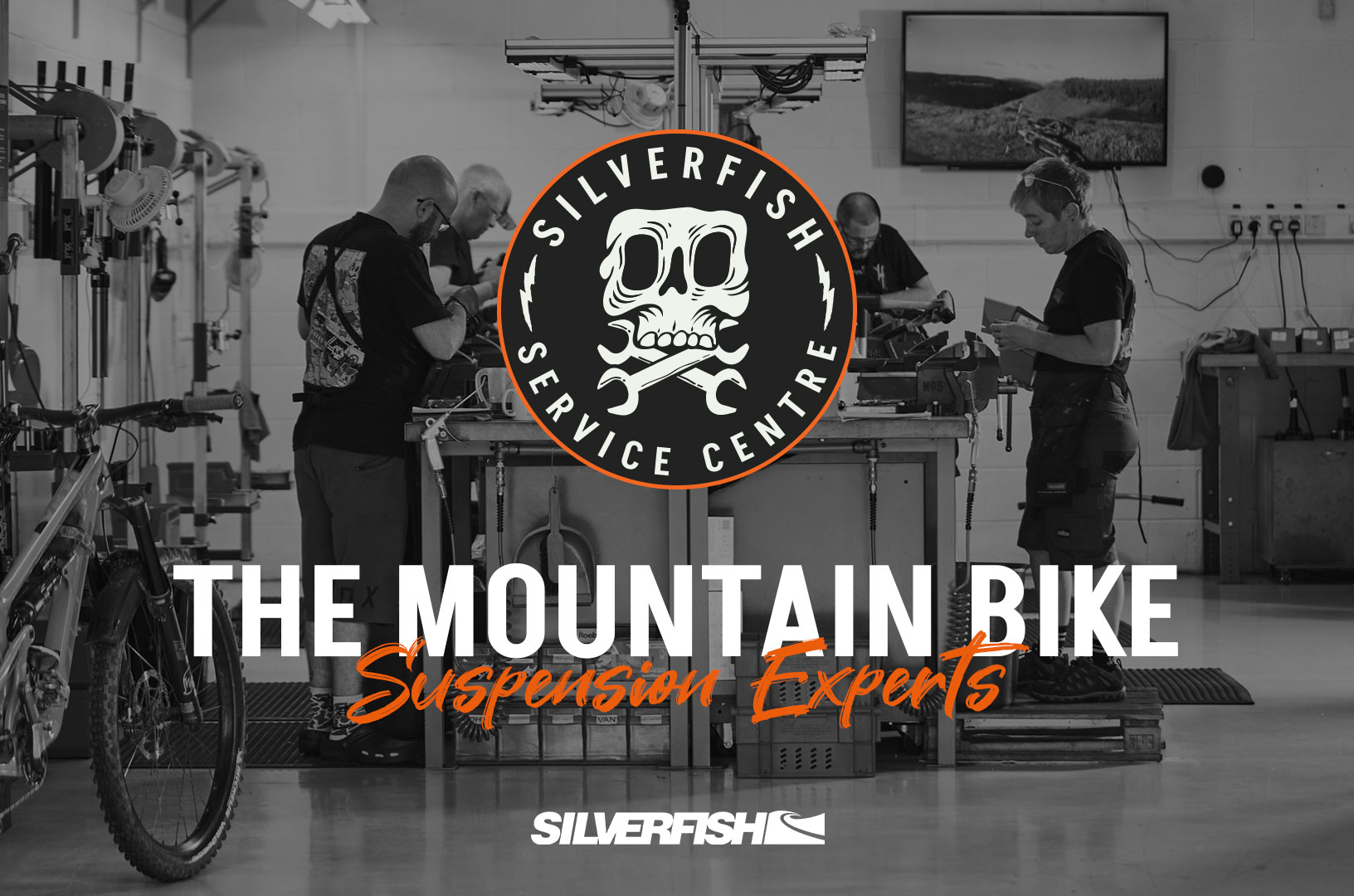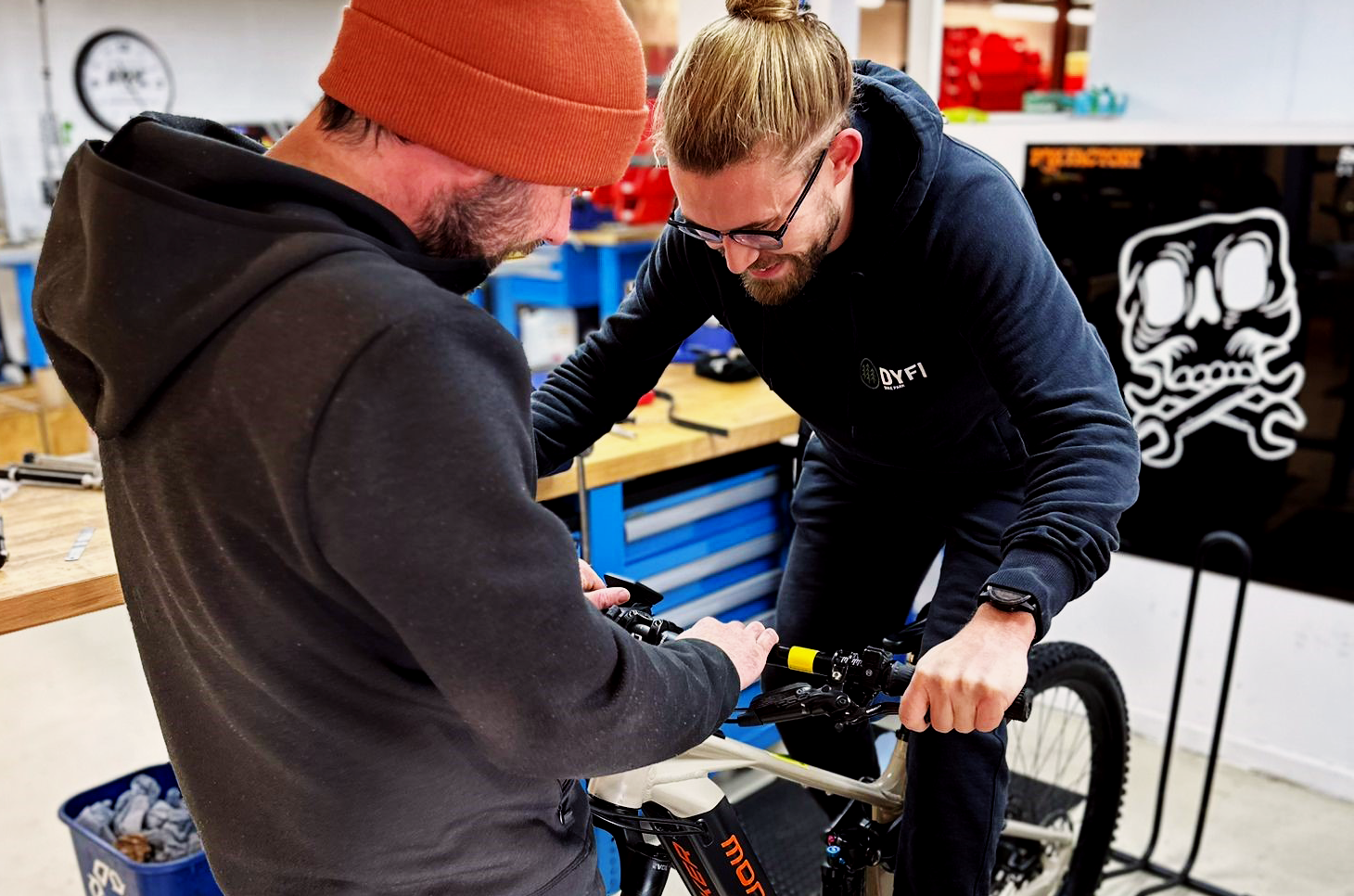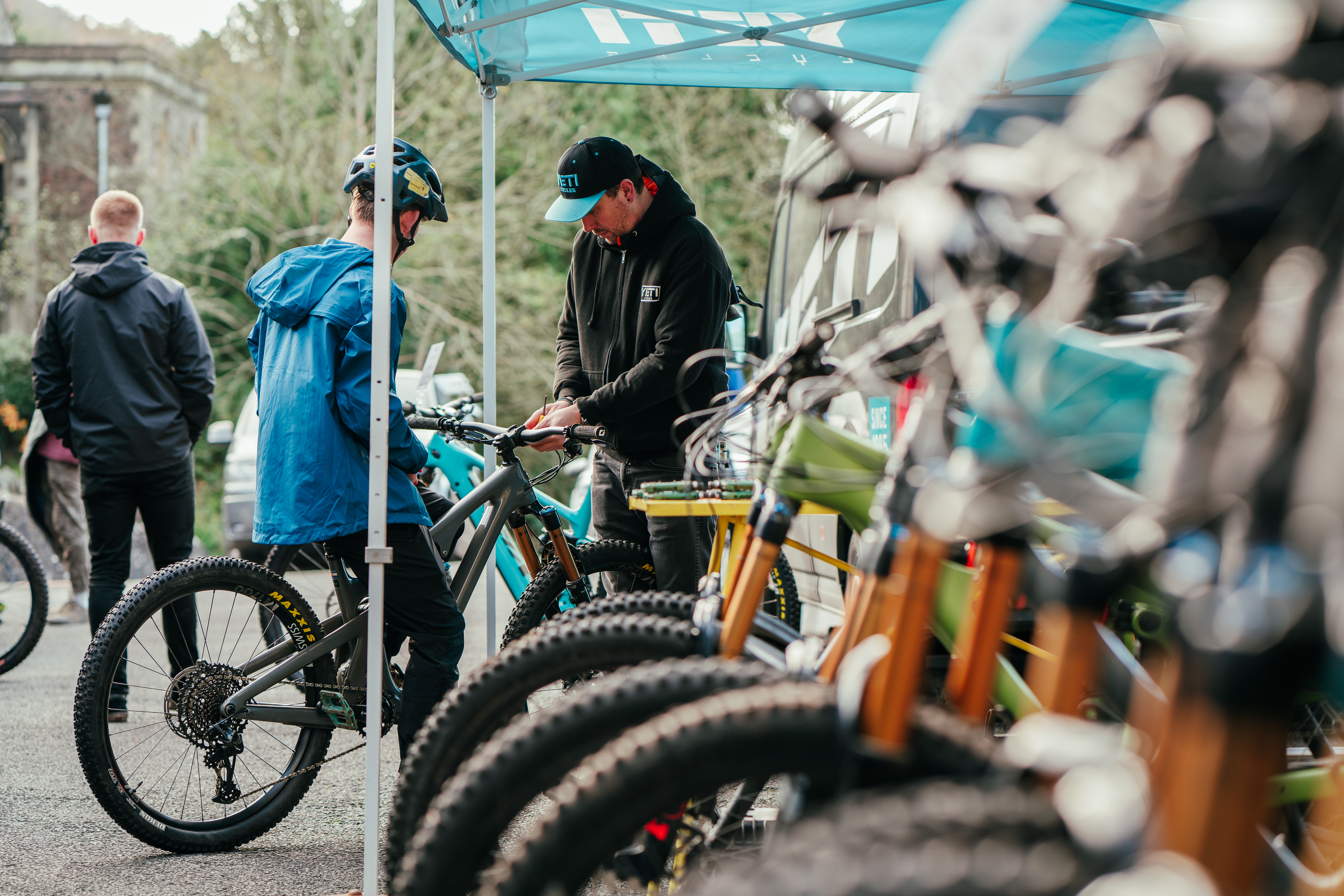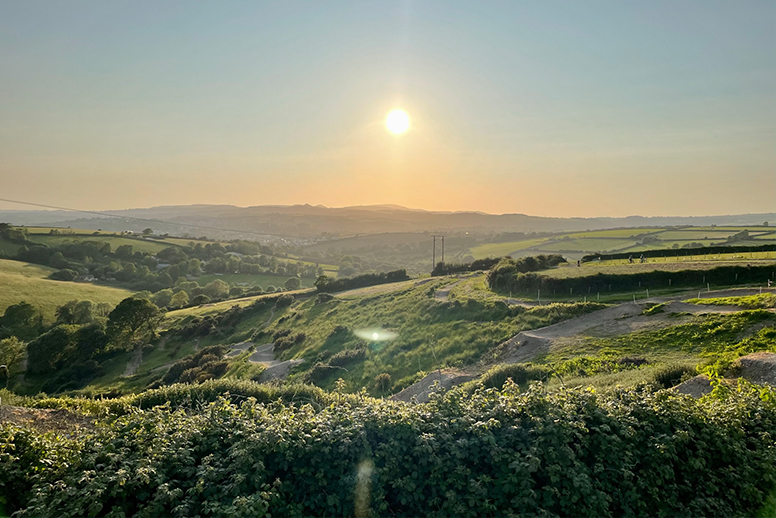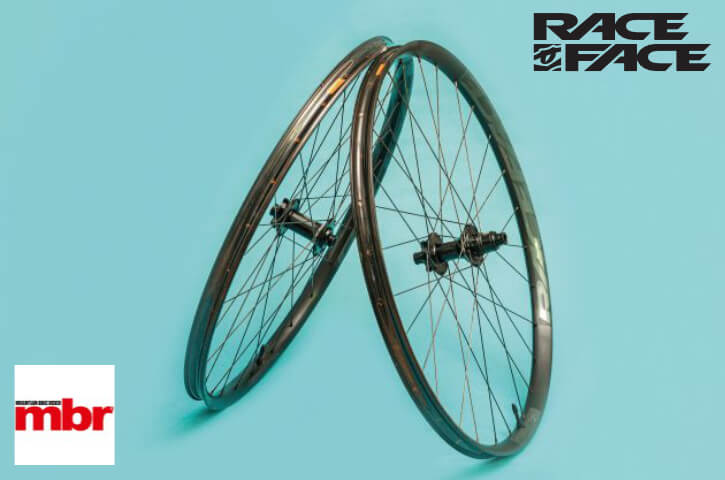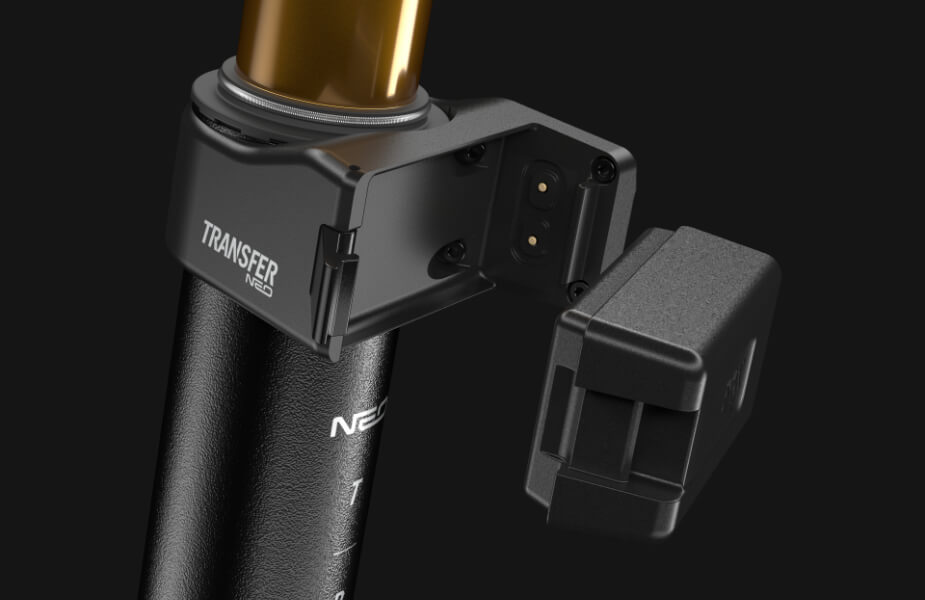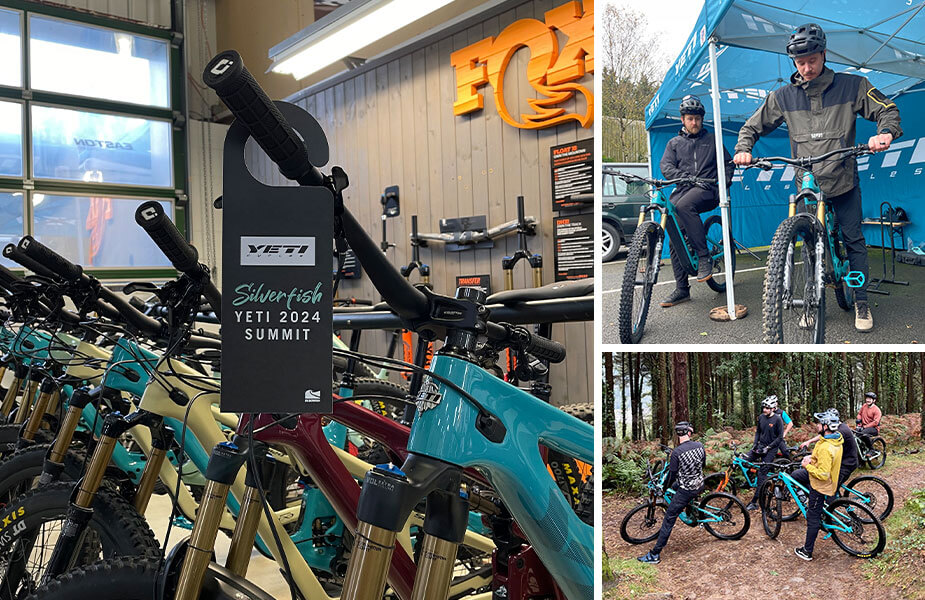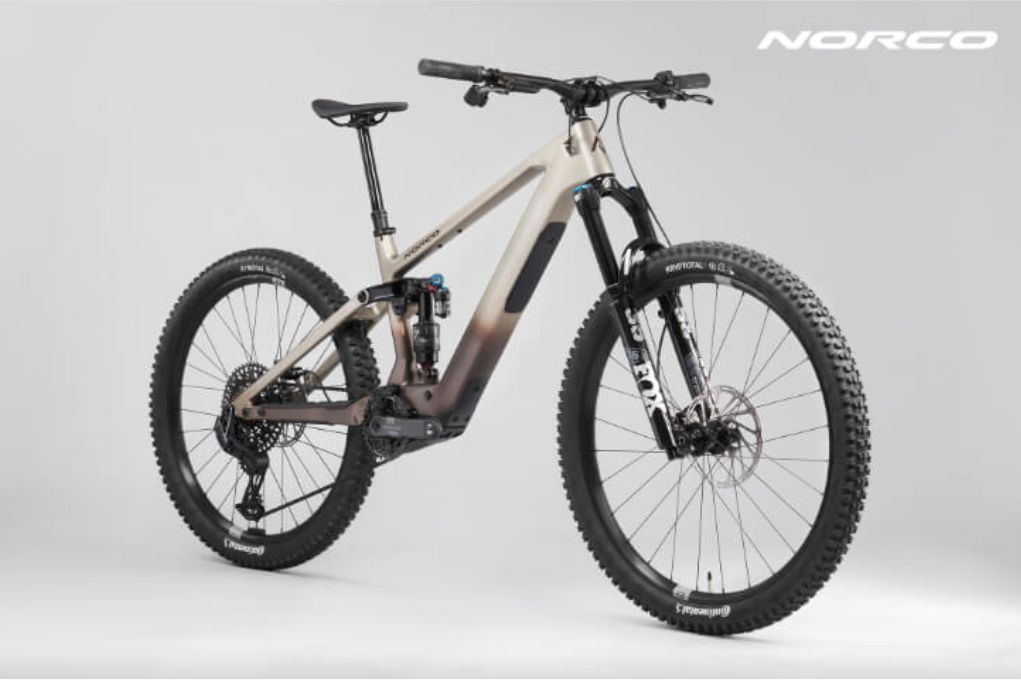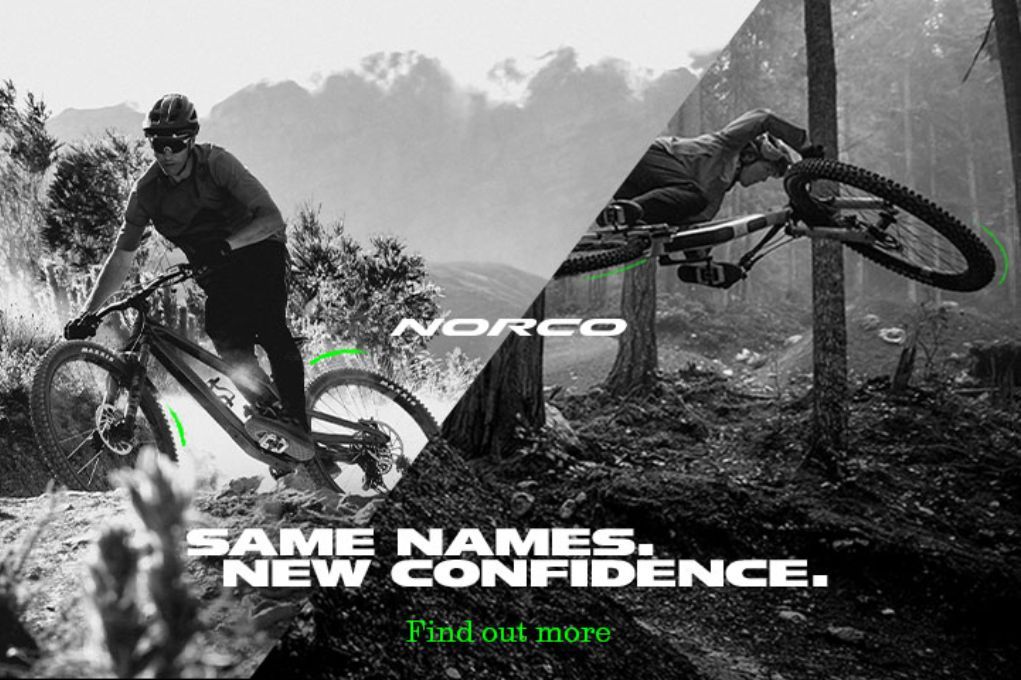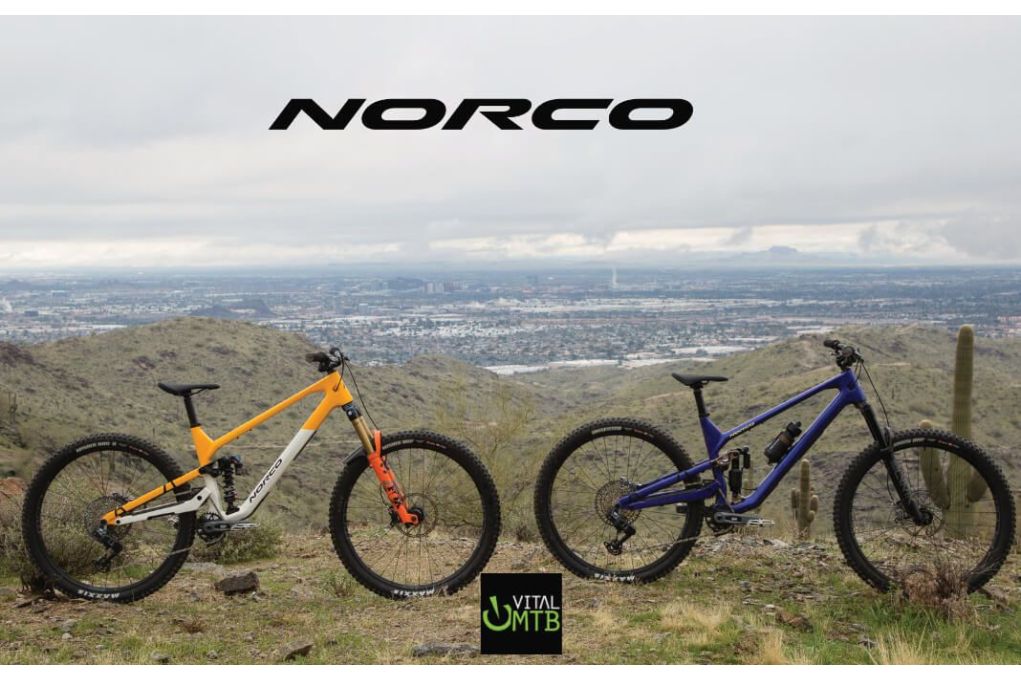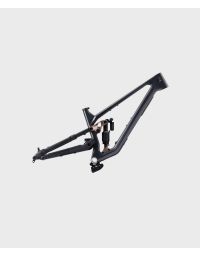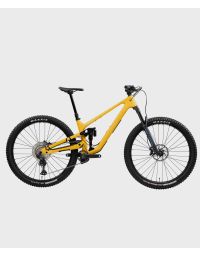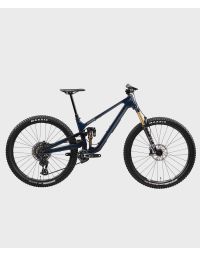ARMEGA SP25
Review: PinkBike - Norco Optic Bike
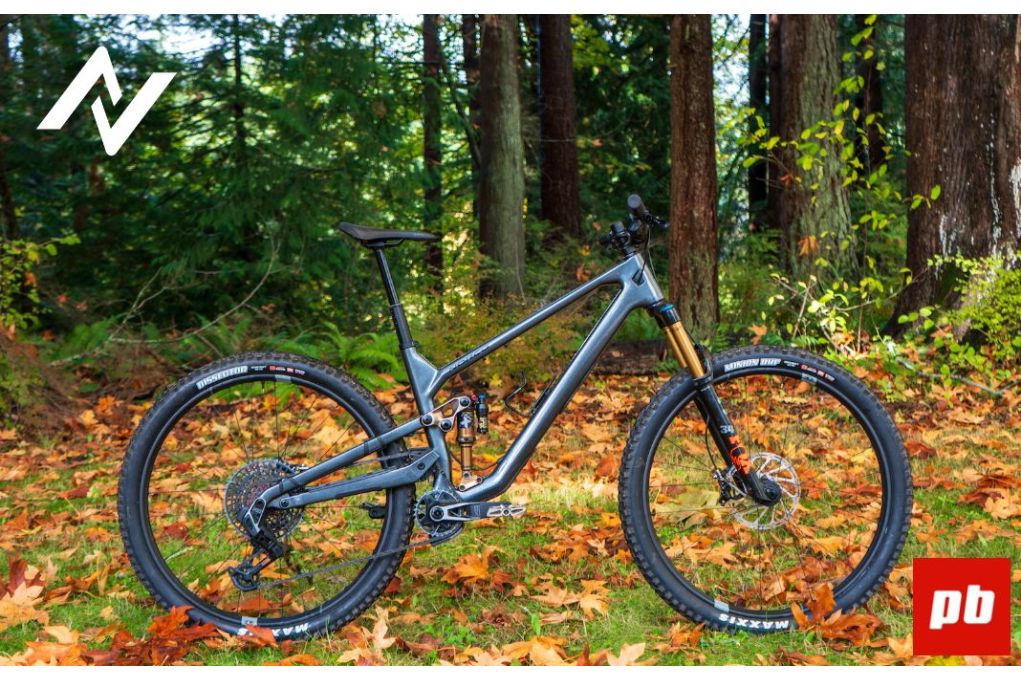
PinkBike has reviewed the New Norco Optic Bike. Here is what they had to say:
The Norco Optic has become something of a legendary little bike, with an atypical combination of short travel, aggressive geometry, and serious intentions that result in something genuinely unusual on the market. The outgoing Optic even managed to win our Bike of the Year award in 2019, which is somehow 5 years ago due to some sort of space-time rift.
Time may be crumbling away like so many sandcastles, but the Optic has remained consistent in some sense. It's still sporting 125mm of rear travel, a 140mm fork, and aggressive trail bike geometry. There are big changes for the new model though, the most obvious of which is the high pivot idler-equipped suspension design, making it the shortest travel bike of that sort on the market.
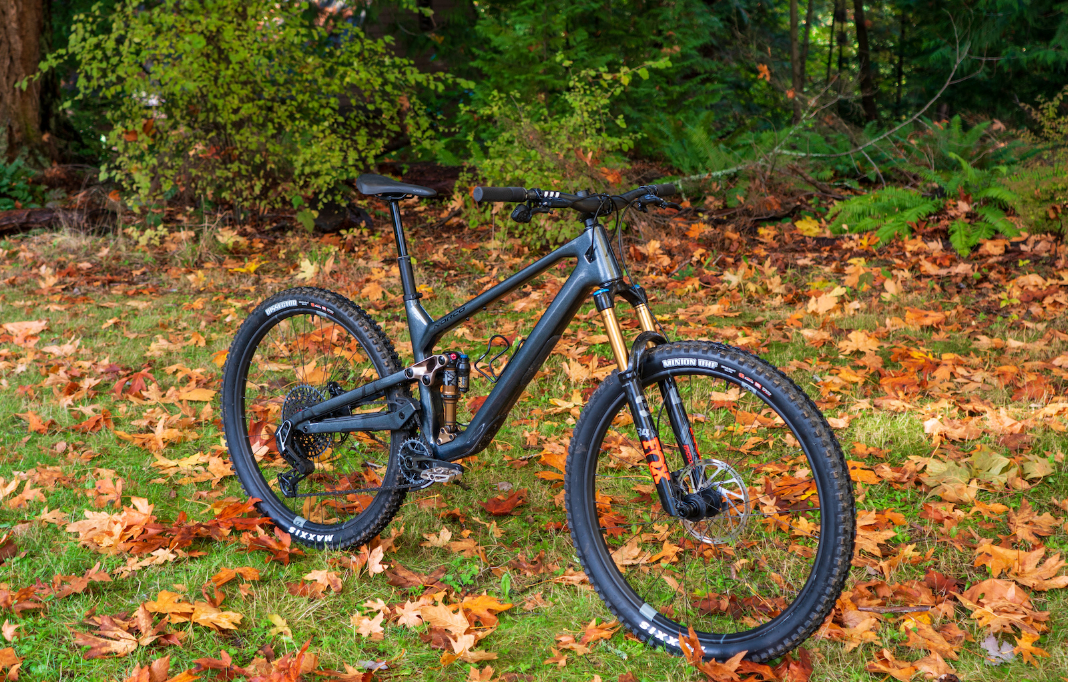
Frame Details
Carbon, aluminum, mixed-wheel, or full 29, the options are plentiful with the new Optic. This frame's adaptability will certainly yield some interesting builds as the bike proliferates, and can take many forms depending on which spec and style of build you go with. Regardless of those choices, there are some constants with Norco's new trail bike, such as tube-in-tube cable routing (on carbon models), aftermarket "Missing Link Kits" to change rear wheel size, and of course the idler that allows for the high pivot suspension layout. That pulley wheel is compatible with all of the proprietary chain widths out there these days, and includes a slick upper guide to keep things from jumping the rails.
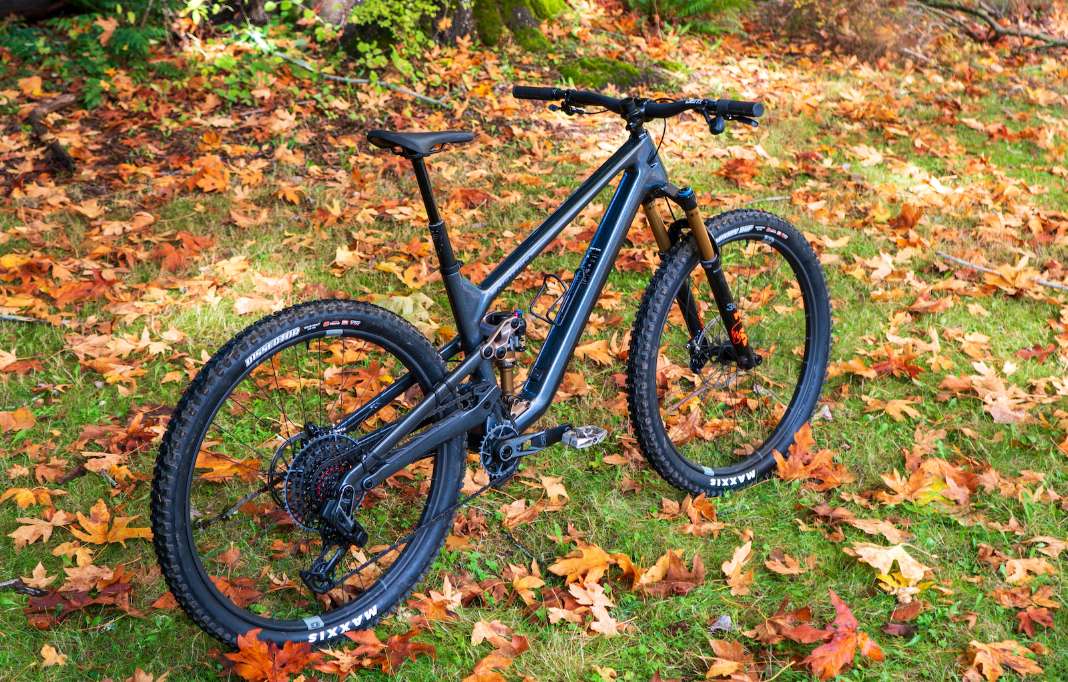
All of the bikes have room for a water bottle, and include a toptube accessory mount for pumps/tubes/bananas, etc. Frame kits come spec with a Vivid shock, Norco-branded lower chainguide/bashguard, and all the little bells and whistles that keep the bike quiet and well protected.
For those who want to experiment with wheel size that differs from stock, the Missing Link Kit can be purchased aftermarket. This includes the lower shock mounts and rocker link, with a full swap taking about 20 minutes to complete. The kit costs $178.50 in Canada and $134.25 in the US. One very impressive element of the Missing Link is the preservation of the kinematics and nearly all the geo figures, meaning just about everything except the wheel size remains consistent.
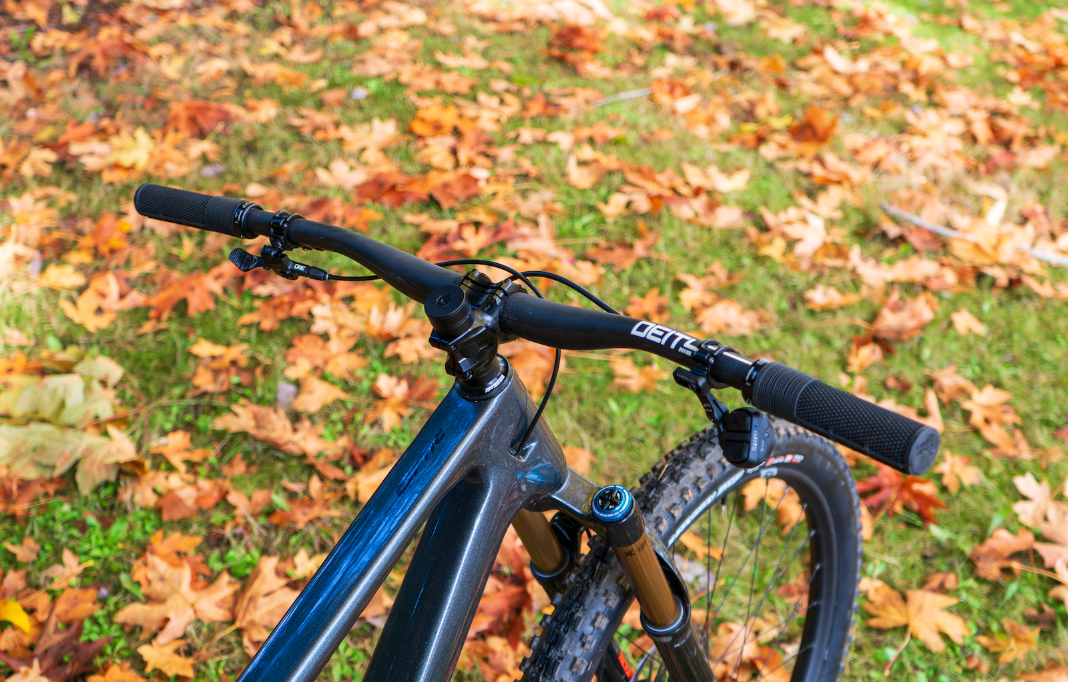
Geometry & Sizing
It's the same old story every time I cover one of their bikes, but Norco's Ride Aligned approach to bike sizing really works, and makes for some very well-balanced bikes regardless of the rider's size. The Optic is no exception, though it does deviate from their typical approach a little bit. That deviation is primarily in the rear center of the bike, due to the growing figure as the suspension moves through travel. More on that later, let's first touch on the more static numbers. There are 5 sizes in the range, with numeric sizing replacing the standard t-shirt descriptor.
The Optic is firmly in the averages when it comes to trail bike geometry, sporting all the right figures for a bike with varied intentions. The head angle is 65° across the board, seat angles vary by size but land within half a degree of 77°, and reach numbers range from 422.5mm to 522.5mm with a 25mm jump between each size. A 32mm bottom bracket drop keeps things hooking in the turns, and when coupled with the high stack numbers make for a nice upright fit and neutral body position.
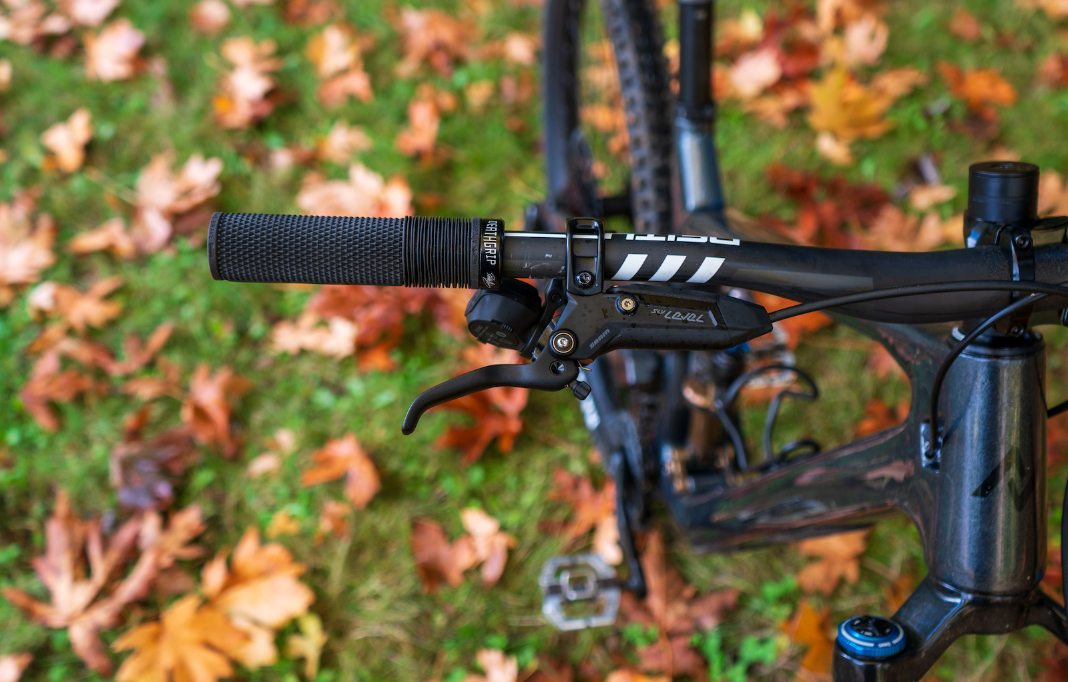
As I mentioned earlier, the rear center lengths are a bit short on paper, but do grow through travel. The chainstay length goes up by 4mm per size, ranging between 421 and 437mm in the 29" configuration. I mention the wheel size because rear center is the one geometry figure that does change with the Missing Link swap, giving the 27.5" rear bikes 6mm shorter rear center lengths.
A note on the sizing recommendations that Ride Aligned spits out: it's still important to take your personal preferences and terrain into consideration. At 6'3", the calculator recommended that I ride a size 5 bike, with a 522mm reach, but I'm certain that the size 4 I tested was the right bike for me. If I were one inch shorter, it would have given me the option, but for those on the cusp of sizes, keep that bias in mind.
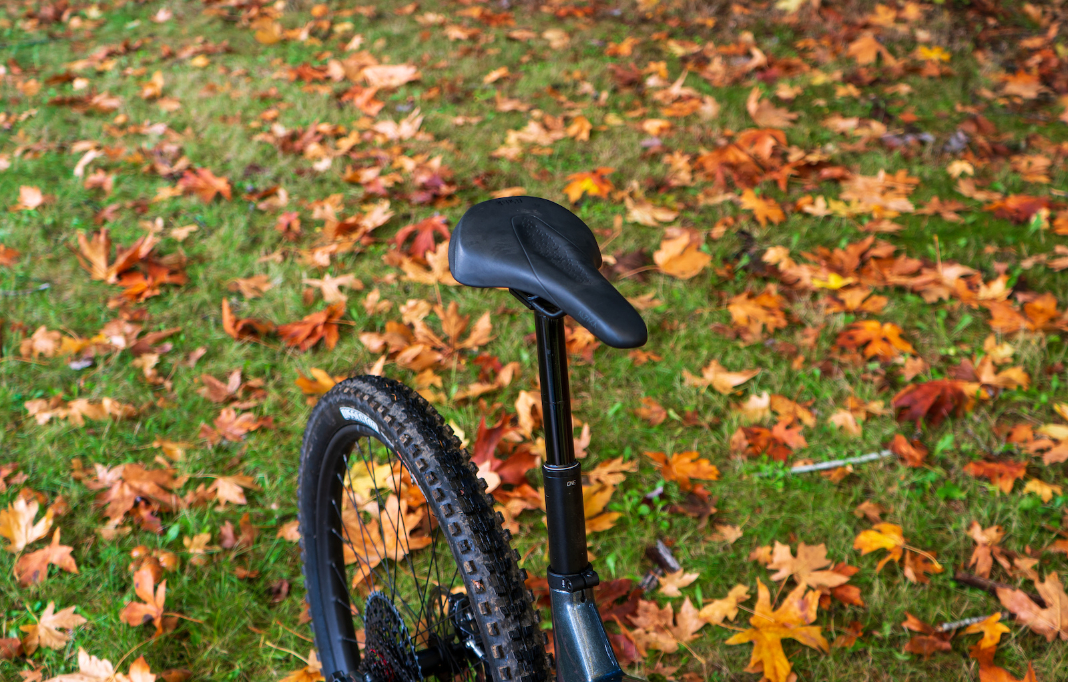
Suspension Design
Clearly things are a little different than the prior Optic on this front, but generally the nature of the bike is in keeping with the heritage of the name. The Optic is still 125mm of rear travel, still sports a 4-bar layout, and is still meant to be a well-rounded bike with a focus on technical riding in harder terrain. The high pivot layout implements the i-track patent, which essentially spells out where the idler can be located on the chainstay. This location is key to the anti-squat, pedal kickback, and chain growth characteristics of the bike, and was fussed over quite a bit through testing.
In keeping with their semi-secretive trend, Norco didn't provide graphs to describe their kinematics, but instead went into great detail on the description of each attribute that plays a role in the suspension feel.
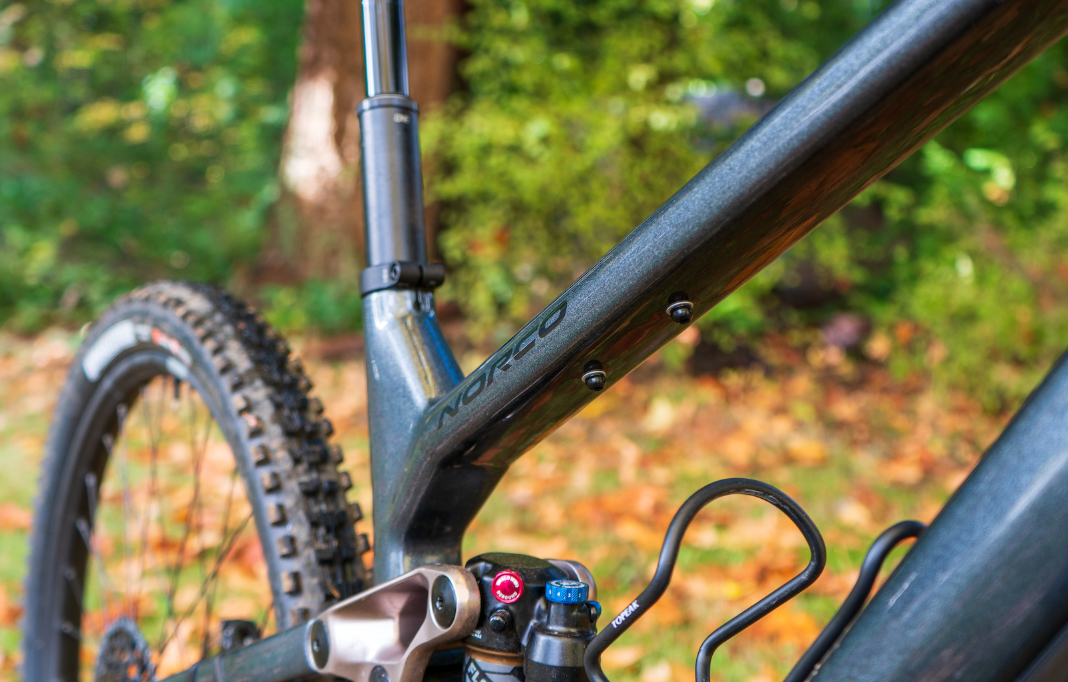
Climbing
The Optic might not look like the lightest bike out there, but luckily the on-trail sensation says otherwise. Pedaling the 125mm high pivot was less of a chore than you might fear, though it's still quite far from being confused for an XC bike. The suspension biases a bit towards compliance and grip, especially when seated, but does firm up nicely under hard pedaling. Generally there is a forgiving feel to the rear wheel action while motoring up trails, getting out of the way rather than bumping you out of your seat on every little obstacle.
That bump-smoothing performance comes with some cost though, both in the form of drag and noise. I was diligent about lubing the chain before every ride on the Optic, but found that over the course of any long pedal the chain started sawing away on the idler pulley, producing quite a bit of noise. I resorted to a method I'd used when riding a V1 Forbidden Druid for a winter, and simply carried a little eye dropper of chain oil with me on rides, topping things up if the noise ever got particularly heinous.
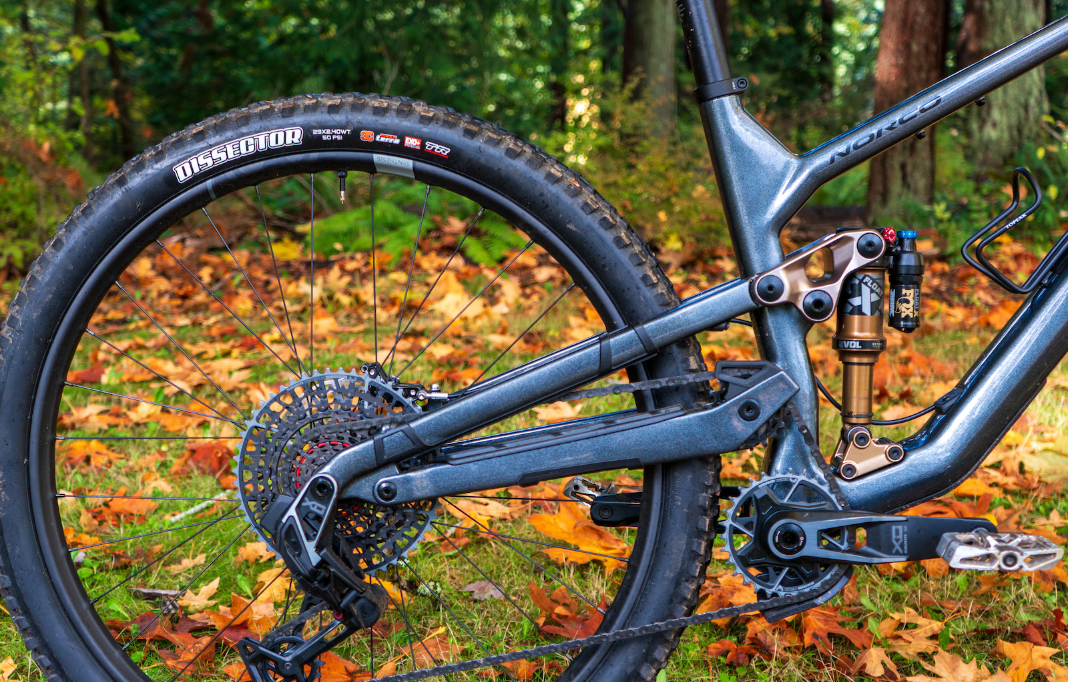
That noise might mostly just be a psychological detriment, but Seb's findings seem to indicate that there's some real drag at play with the extra chain wrap. This really didn't bother me for the majority of testing, but after having a few ride buddies comment on the noise it feels worth mentioning for those who mind.
Descending
Over the past few months I've been trying to weigh whether I thought the extra complication and faff of the high pivot was worth whatever descending benefits provided to the Optic, and I think I've come to a semi-confident conclusion. For the right person, someone who wants a little bike that can push beyond its purview when truly ridden hard, the tradeoffs might just be worthwhile.
The benefits here are not profound, making all other 120-130 bikes feel puny in comparison. It's more of a subtle leg up on the competition, with a smoother, more composed ride through rougher patches of trail while still remaining poppy and fun in chill terrain. Going back to back with other bikes in a similar travel range, the biggest difference is in the feedback felt through the feet, with less chain influence on the pedals through successive hits. Getting the bike to sing requires a bit of a heavy hand, rewarding a committed ride style and heavier presence through the feet than other bikes. This is a hard sensation to sum up well, but suffice to say it prefers it when you ride hard.
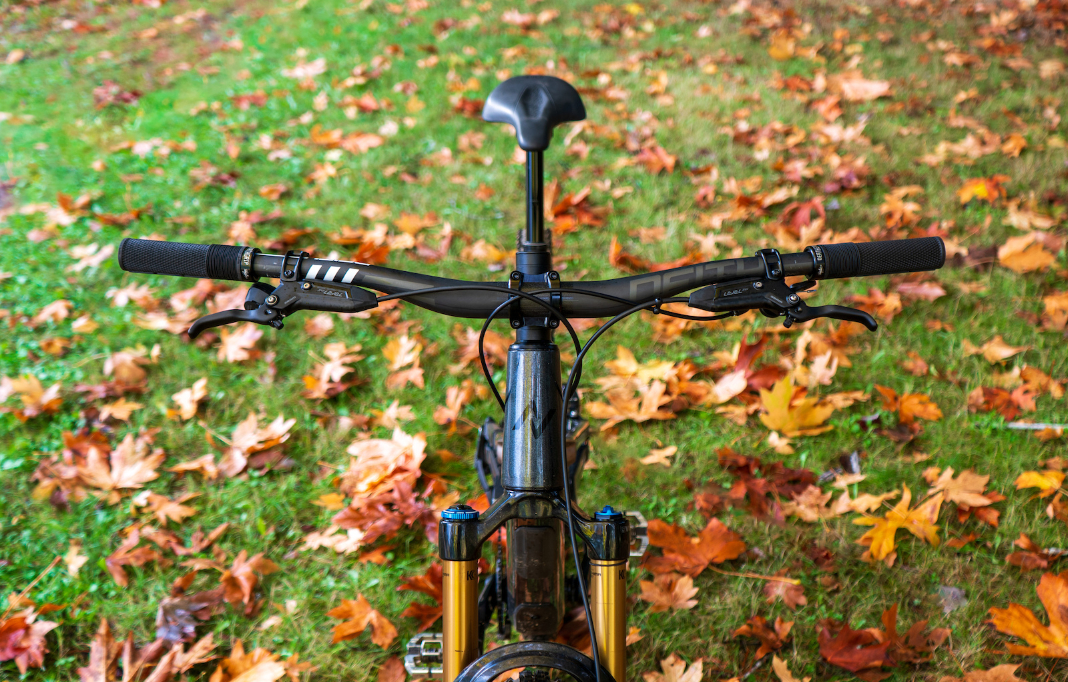
The Optic jumps intuitively, both on bigger lips and off of smaller side hits, with none of the weird unpredictability that some high pivot bikes can generate. I think this is largely due to the relatively neutral rearward axle path, as opposed to bikes that just keep getting longer the more you push into them. There's enough growth to counter the very short chainstays, but not so much that things get weird. I might have made the starting rear center a little longer myself, but the bike does retain a lively and cutty feel as a result of the shorter back end.
Pinkbike's Take
The Optic is a truly unique bike in a world where it can feel like most bikes are becoming more similar. That unusual layout isn't just for conversation starters, as it truly does offer impressive descending characteristics for a bike with such short travel. Those benefits aren't without tradeoffs though, as the climbing won't be as snappy and energetic as other short travel bikes, and the extra faff of the idler pulley might turn some off. It's one of those things that will appeal to a specific crowd - you know if you're one of them.
Read the full article here
